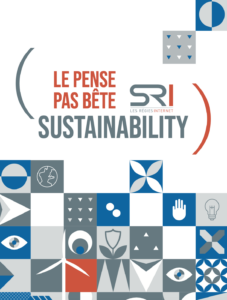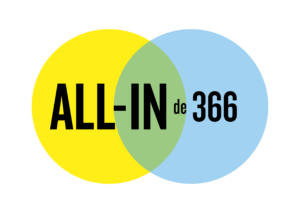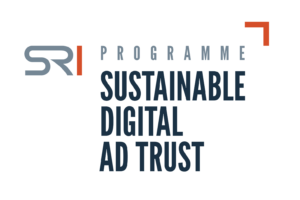
Of the many themes coursing through the Covid-19 conversation, perhaps the most powerful is the idea that the global pandemic will cause both individuals and industries to reset, reflect and refocus around what is important.
This is certainly the case in the advertising industry, with the unprecedented situation and subsequent lockdown compelling brands to rethink their communication strategies. But ad campaigns are still more than welcome according to FreeWheel’s latest research, which provides a snapshot of the perceptions and expectations of French consumers towards advertising during this period.
The study was undertaken at the end of March, during the second week of confinement in France. It reveals over half of French consumers give more or as much attention to ads as they did before the lockdown began, indicating advertising is still an effective way to reach and engage audiences. But to get their advertising strategies right during this exceptional period, brands must consider the three elements of delivery channel, tone and context.
Choosing the correct channel
Almost three-quarters of French people consume more media content than they did prior to the lockdown, with 37% reporting they consume much more. This trend gives brands increased opportunity to connect with audiences while they are immersed in content. So the question is, what are they watching?
When viewing video content during confinement, the most used platform remains linear TV, with 80% of respondents indicating they use this channel. Preference for linear TV is particularly strong among the 55+ age group, with 49% saying it is their first choice for video consumption. But linear TV is popular across all age groups, cited as first choice by 37% of consumers overall. Catch-up TV platforms such as MYTF1, 6play, and myCANAL are the most frequent second choice and, along with free online video, these are highly effective channels for reaching the 18-24 and 45-54 age groups.
Setting the right tone
Gauging their audiences’ mood and priorities is challenging for brands at this time, and they need to ensure their messaging sets the right tone. Overall, it seems French consumers are in need of humour in the current climate, with seven in 10 preferring ads that make them laugh, such as the ad for Univers Freebox which gives a light-hearted take on confinement. But deeper analysis reveals the tone consumers expect from advertising varies greatly by vertical.
Interestingly, at a time when airlines and tourism brands are putting ad campaigns on hold and pausing media spend, the vertical French consumers most want to see advertising for is travel. Consumers want something to look forward to when the situation returns to normal, so now is actually a good time for travel brands to advertise. Of the 42% of consumers who want to see travel ads, the majority prefer ads that make them dream, perhaps providing a distraction or form of escapism from the current reality. Alpine Adventures brand Alpenwild meets this need in a campaign with the tagline ‘Dream big. The Alps await.’
Ads for groceries and high-tech goods are also popular, coming second and third place in the sectors consumers most want to see ads for, with males in the 18-24 age group particularly interested in the high-tech sector. When ads relate to groceries, high-tech products or communication services such as mobile or internet plans, consumers are practical and want brand messaging to be useful, offering financial discounts.
Currently, most consumers are least interested in seeing ads for financial services such as banks and insurance, but there is strongest interest across the 18-24 age group who are the most willing to see offers from this vertical. Finally, when brands are advertising beauty products or cars, consumers prefer ads that create an emotional connection.
Taking context into account
Many brands are wrestling with the question of whether to directly address the Covid-19 situation within their ads, but the view of the French people is clear. Six out of 10 consumers believe brands should take the current context into account and must integrate the Covid-19 situation into their ad messaging. This need is particularly strong for brands within the food and groceries vertical, where almost half of consumers prefer ads that relate to the news.
A fifth of consumers feel brands should address the Covid-19 context as long as they are authentic and commit themselves to fighting against the consequences of the pandemic, while 15% feel brand ads should reinforce messages around virus prevention. Brands across the world already appreciate the importance of supporting preventative messaging. Notable examples include Uber whose ads thank customers for not riding, Burger King which has launched its ‘Stay home of the Whopper’ campaign, and McDonald’s which has released a 20-second ad featuring someone washing their hands.
Advertising during the Covid-19 pandemic and lockdown will always be a complex journey for brands, requiring them to reflect on what is important and rethink their strategies. But insight into consumer perceptions and expectations can help them make informed choices around creative context, tone and delivery channels. By choosing the channels preferred by their target audience, ensuring the tone is right for their vertical and authentically addressing the Covid-19 context, brands can still reach media-hungry consumers with appropriate and engaging ad campaigns during this unprecedented time.
Lire ce contenu sur le site de FreeWheel
Methodology: The FreeWheel study was carried out on 25th March 2020, in partnership with independent third party Happydemics. Using in-app mobile forms, 1,082 respondents answered 10 questions.
Press Coverage: “61 % des Français attendent un « parler vrai » des marques pendant l’épidémie” Les Echos



